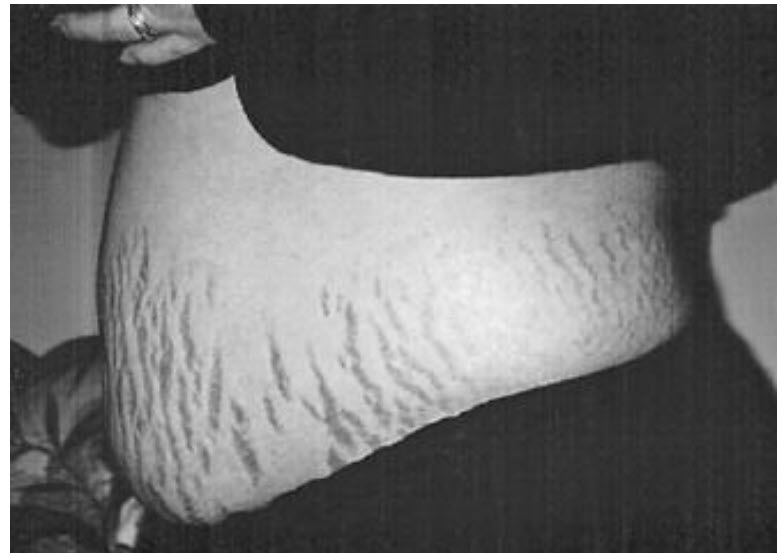Question 26#
The 40-year-old woman shown below complains of weakness, amenorrhea, and easy bruisability. She has hypertension and diabetes mellitus. She denies use of any medications other than hydrochlorothiazide and metformin.

What is the most likely explanation for her clinical findings?
A. Pituitary tumorB. Adrenal tumor
C. Ectopic ACTH production
D. Hypothalamic tumor
E. Partner abuse (domestic violence)
Correct Answer is A
Comment:
The clinical findings all suggest an excess production of cortisol by the adrenal gland. Hypertension, truncal obesity, and dark abdominal striae are common physical findings; patients often have ecchymoses at points of trauma (especially legs and forearms) because of increased capillary fragility. The process responsible for hypercortisolism is most often an ACTH-producing pituitary microadenoma. An adrenal adenoma that directly produces cortisol is the next most likely option. Most ectopic ACTH-producing neoplasms (usually small cell carcinoma of the lung) progress too rapidly for the full Cushing syndrome to develop. These patients usually present with muscle weakness due to profound hypokalemia. The initial test to diagnose endogenous cortisol overproduction is either the overnight dexamethasone suppression test (in normals, the AM cortisol should suppress to < 2 μg/dL after a midnight dose of 1 mg dexamethasone) or 24-hour urine collection for free cortisol. More extensive testing is then required to determine the source. Hypothalamic tumors can affect ADH production and eating behavior but do not produce cortisol or ACTH. Unexpected bruising should prompt questions about domestic violence, but partner abuse would not account for the constellation of this patient’s findings.